Many of you are have heard of (our friends) US Wellness Meats, but we thought it would be interesting to catch up with the brains behind the business – John Wood – and get his thoughts on how things are changing within both the Paleo community and the US agriculture environment.
Their mission is simple: Do what’s good for our animals, good for our planet and good for you.
U.S. Wellness Meats grew out of John’s realization that there was a unique way of raising cattle for a growing niche of U.S. consumers who were beginning to understand the health benefits of CLA and omega-3s from free-range meat.
A fifth-generation farmer, John was used to thinking like his ancestors and his neighbors when it came to raising animals. In a nutshell, this old method meant raising the animal on pasture, feeding them grain in confinement for the final four months, and then selling them off to a big animal processor when it was time for them to be harvested. But with a little experimentation, he discovered the old method might not be the only method. In 1997, 1998 and 1999, John raised animals on a 100% forage diet and had the proof he needed: there was another way to get tender and exquisite-tasting beef, lamb, bison, and dairy products. One of the key secrets of their new model? Keeping the best quality forage in front of animals on a daily basis with a rotation grazing sequence. This traditional method mimics how buffalo grazed in North America for centuries, and it is the critical difference between 21st-century grass-fed and the old 1950’s model.
Primal Palate is proud to partner with US Wellness Meats. On our recipes utilizing their meats
you can purchase by clicking the icon in the ingredient listing. Try it out!
(You can listen to the full 35 minute interview above, or read it below.)
Bill & Hayley: Today we have a very special guest here with us, John Wood from US Wellness Meats, Primal Palate and US Wellness Meats go back many years. We had the great opportunity to visit their farms in northeast Missouri in 2012 and we had a great time touring the various farms and seeing the operations that they do to bring these super high quality meats to you, shipped wherever you want in the US. We’re just so impressed with the things that US Wellness Meats has done in the past and continues to do as they’re a pioneer in the field of getting pasture raised healthy meats direct to you door so welcome John Wood and thank you so much for taking the time to talk with us today.
John: Hello Bill and Hayley, honored to be a part of your mission and a great thank you for all you do because you’re a key integral part of the process in educating US consumers. When we started this thing in 2000 we were way ahead of the curve and folks like yourself who were pioneers in the educational phase with your outstanding talents and cooking and recipes and some great publications and blogs. It’s just all part of the educational process. It’s really fun because we just attended the Paleo f(x) in Austin and it had 3500 people there, more than double last year. I think you need to be applauded for your efforts because you’re all part of leading the way on this thing. It was pretty exciting to see all those folks out.
A lot of people came by, we were able to meet long term customers and got to put faces to names. The air was really full of enthusiasm, it almost crackled from the quality speakers we had on site out there. It was just awesome. The folks that put that together need to be credited as well. Our friends there were enthusiastic about next year and my forecast is 5000 people in 2017 so we’ll see what happens.
Bill & Hayley: Wow. That would be crazy. Tell us about how US Wellness Meats came to be.
John: Well it’s an interesting story. I guess where I kind of got off the track was 1993. I was given Holistic Resource Management by Allan Savory to read by my business partners and now one of the owners of the company.
The cattle feeding industry was being controlled by the meat packers, competition was not what is should be and we were looking for alternative ways to utilize our land and resources. Along the way, we read about Dr. Mike Pariza, the grad student at the University of Wisconsin, who was doing research on charcoal broiling beef. Back in the 70’s there was a concern and I the early 80’s, that charcoal was going to cause cancer. Cooking meat over a charcoal flame. Much to everyone’s surprise, Dr. Pariza discovered there was something in red meat that was feeding the growth of the tumors and our original light-bulb moment, a couple of light-bulb moments, was the fact that meat can be medicine and could be really really healthy from the grazing animal, and, then if you rolled back the clock to 1995, the internet became a viable option for marketing. I guess my thought process was, somewhere in the nineties, was the closer we get to the consumer, the better we can control the product. It was win win fer everybody.
The other watershed moment occurred in 1997, we actually produced and harvested our very first grassfed animal. Took it off to the country locker and told the locker manager “I’m not sure this is fit for steak”, it’s just against everything I’ve been taught to do. No starch in the diets, just high quality forages and much to our shock and surprise, we compared it to a piece of prime Hereford beef and it was just really prime plus. It was the best of the best and we all three said the flavor was better from the grassfed animal. We cut everything with a plastic knife and fork, and being from Missouri show-me state, we just didn’t believe it, we just had to see it again….
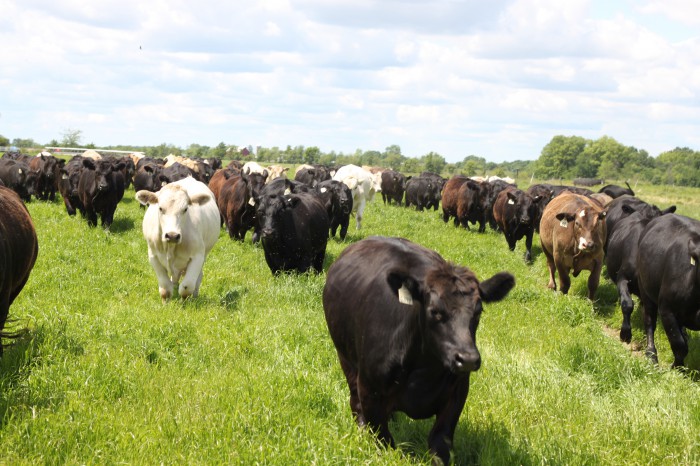
… So, in 1998 we did it again and the same results much to our surprise. Then in 1999 we harvested 6 animals and got a little bit wiser, and we sent tissues off to the University of Illinois and Iowa State to the land grads so that they could measure the CLA [conjugated linoleic acid] and measure the fatty acids that are in red meat. Both lads came back with essentially the same numbers, you have a really good CLA content. CLA is a unique compound that fights cancer, fights diabetes, good for the circulatory system.
… Believe it or not, we have figure fitness models, the gals that do the 1 arm push ups, and gymnasts buying 75% lean ground beef from us, they were after the CLA. I’ve talked to several of those girls over the phone over the years and it was just magical. They were raving about the stuff. Then we got the strongmen competitors [buying beef from us] and it wasn’t so much how strong they were after the first 60 days, it was their knees were better, their hips were better… Once you improve that omega 6:3 ratio, magical things happen.
One of the most amazing people we’ve met in the last 2 and a half years is Maureen Quinn, who is a young lady that lives out of Long Island, a microbiologist by day and she calls herself a strongman competitor. I’m not going to argue with her. She’s 118 lbs and she’s dead lifting over 300 lbs. She helped us out at Paleo f(x) in Austin. Every time I see her, I’m just amazed that she’s so strong.
She’s gotten into the paleo movement in a great way and she eats once a day. She says “John, remembers lions only eat once every 2 or 3 days”. You can see the steel in her eyes, the firs in her eyes. Nobody would suspect that she’s that strong, but she’s a 75 – 80% fat diet and eats between 5.30 and 6.30. A high fat and protein diet. This is simply off the charts, what she’s capable of doing… She is a most amazing person I’ve ever met. Pound for pound, when you look at her hands, … I just don’t see how she can hang on to 300lbs, let alone pick it up…
Bill & Hayley: Wow, incredible. One of the things that’s so interesting, it struck me when we were out at your farm, and I think it’s a really important part of what you’re doing, is the land stewardship aspect of raising the cattle the way they’re supposed to be raised. Do you want to talk about that a little bit? I think that’s just so important.
John: That’s probably the most exciting thing that we’ve stumbled into in the last 4 – 5 years. I belong to the grassfedexchange.com, [a volunteer, non-profit organization of regenerative ranchers and grassfed industry supporters who believe that regenerative grassland agriculture can create a sunlight-powered future filled with healthy and prosperous families , thriving communities, deep topsoil , clean and abundant water and vigorous biodiversity] which meets once a year. We’ve just had the 7th annual meeting in Georgia back in April. Probably 400 of us got together from around the country, all interested in producing beef.
One of the real avenues we’ve really pursued in the last 4 – 5 years is soil health, soil biology and Gabe Brown was a member of the committee for the last 3 1/2 years, he’s kind of the rock star. He’s been interviewed by Dr. Mercola. He’s probably one of the shrewdest farmers in the United States. He’s got a large grazing and crop operation in North Dakota. He’s used no commercial fertilizers for the last 7 years. The one that just blows people’s mind … You know, Bismarck, North Dakota gets cold… [The Browns holistically integrate their grazing and no-till cropping systems, which include a wide variety of cash crops, multi-species cover crops along with all natural grass finished beef and lamb. They also raise pastured laying hens, broilers and swine. This diversity and integration has regenerated the natural resources on the ranch without the use of synthetic fertilizers, pesticides and fungicides. They believe that healthy soil leads to clean air, clean water, healthy plants, animals and people. Over 2,000 people visit the Brown’s Ranch annually to see this unique operation. source: grassfedexchange.com]
This year, on the farm, we planted a crop mix. There’s 8 different species. There’s legumes, there’s grasses, there’s some random forages, it’s about 15 inches high right now. We’ve still probably 30 days away from grazement. You just have all these different plant species, and were trying to get away from monocultures, and I was through the pastures over the weekend and I’m just stunned by how much clover I have, which is part of the diversity of the mix. Prairie grasses are coming back, and of course, the grazing management. What we’re doing, if you can picture, the room you’re standing in at the moment, and you broke it down into 30 different squares and the animals are at square one on day one and you go around 30 days later, well, you imagine what your yard would look like after 30 days of rest.
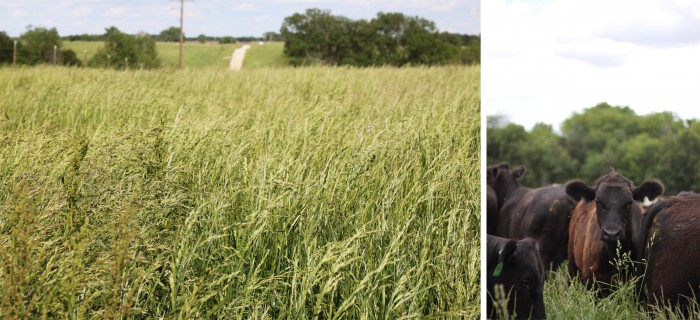
We continually try to work on at least 30 days of rest. Every year you do have the roots go deeper and the livestock actually are part of the healing of the soil and are creating lots of carbon. Abe Collins is probably one of the top gurus in the world of creating carbon. He is from Vermont, a very difficult soil up there, he’s created 6 – 7 inches of pure humus in about 3 or 4 years. Cornell University is just shocked at what he’s been able to do…
The carbon thing and the planet, it’s pretty simple, you bring the grasslands back to where they were 1000 years ago and you solve the carbon problem. That’s just basically turn desserts back into grasslands, and the Great Plains of the Unites States and areas in New Mexico and Arizona. Las Vegas, Nevada, the reason the union pacific put the railroad station in Las Vegas was because we weren’t using the wells. There was free flowing water back in the 1800’s. It rained 4 inches a year in Las Vegas, 90% went in the ground and 10% ran off. Now, it rains 4 inches a year and 90% runs off and 10% soaks in, just because we ruin the soil surface with too many cattle and too many sheep, that we created a dessert.
There’s a way to correct that action and I hope I live long enough to see areas that are brought back to their original life. There are paintings and there are pictures taken in the 1800’s of parts of Arizona and there’s men on horseback and grass up to the stirrups on the horses. Today it’s nothing but dessert. As a country, we really screwed up. In the 1800’s we didn’t know what we were doing and went out there and overgrazed. There are some smart folks now who know how to correct that, and there’s actually some pretty interesting pockets of money, that are quite enthused. We’ve had a group that’s actually put scholarships up for young farmers and young ranchers to attend the grassfedexchange. There’s hedge funds that realize that agriculture is exciting place to do some neat things. A couple of members of the grassfedexchange are working on a couple of pretty noble projects, trying to turn some of these landscapes around. I think the next 10 years are going to be pretty exciting.
Bill & Hayley: That’s awesome. I had no idea that those parts of the west were grasslands before, but it makes total sense that the ecosystem would be pretty different, even though, to be fair, I’m sure there was some form of civilization there that didn’t screw it up before.
John: Basically, if you look at the Plains Indians, they were great land managers. Don’t forget, there were about 2,000,000 bison in North America back in the late 1700’s. These huge herds of bison would roam, not counties, but states. They would go from North Dakota to Texas and back up again in the summertime. They made these huge hikes, and they would stop for 2 days and graze, and then come back a year or 2 later. It was just the perfect Eco system.
Oklahoma, in the 1800’s when they went out and did the Oklahoma Land Rush, they were breaking the sod out there and the soil humus, soil health on a scale of 1 – 10 was just perfect. Then after they broke the sod, and killed the sod and then they had soil erosion, and then land erosion. It’s somewhat amazing, Gabe Brown has got some land matter that’s up over 10% outside of Bismarck, North Dakota. Every 1% organic matter, you can store an extra 2 inches of water, so you can have 8 inches of rain on his fields, and it all soaks in. His neighbor’s, 90% of it runs off.
We know how to do this, you go to the acres meeting every year, it’s a farm magazine with some really great innovators. There’s enough people around now, and actually, the soil conservation service. It’s actually finally accepted the fact that there’s some folks out here doing some deep things. In fact, Dave Collins has actually been in the national level and lobbied in congress, to create some opportunities for some of the USDA monies to be spent in a different direction.
It’s a pretty simple solution, but we need to get together and we need to do it now, because … if you look up and study the flood history, since 2000, 7 out of the highest rivers crests in the history of the Mississippi river, going back to the 1800’s, have occurred since 2000. The fact that in Iowa, we’ve ploughed up the pastures and the organic matters dropped and soil erodes a lot easier and water runs off. Same thing in Illinois, same thing in Minnesota and huge lots in South Dakota and North Dakota that used to be grasslands are now being farmed. The trend is not good, but there’s enough people now that recognize a problem. I’m optimistic that we can actually start doing some new things.
Bill & Hayley: Yeah. It sounds like the 100 yr floods have now become the 2 or 5 year floods.
John: Exactly. Since 1993 the highest flood ever recorded where I live in Canton, Missouri was 1993, then in 2008, we got within 1 – 2 inches of it and we’ve had some huge rises in the river. It doesn’t take a rocket scientist to look at what’s going on there and see what’s actually taking effect. The fact is, 20,000,000 acres of grassland has been converted to cropland in the last 15 – 20 years. You look at the crop basins in commercial agriculture and wonder where all the acres came from. Well, it’s all pasture land that’s been turned over.
I think there’s some smart people now that recognize the problem, and we’re trying to do something about it. …If you take Google earth and look down at New Mexico, you can see where the watersheds were. It was basically a sea of grass until we messed it up…
Bill & Hayley: Absolutely. Let’s shift gears a little bit. What have you seen in the last 5 years, and what do you see coming in the next 5 years, that’s been really exciting and on your mind?
John: The last 5 years, basically it’s been the acceptance of the practice that we’d been doing for the first 10 years. The first 10 years, we were so far ahead of the curve, and it the last 5 years we finally got into what I call critical mass. The consumers about 2006-7, I think was when we realized we were really on the right track. For the first 6-7 years it was always questioned, would we ever have enough demand to make this a realistic opportunity. The last 5 years, the demand is really picked up, and the other enthusiastic thing to see is, there’s a lot of people doing what we do…
In September 2017, the grassfedexchange conference is going to be Albany, New York. That’ll be a whole different area of the United States. We’ve got a couple of well known chefs from New York City, that are going to showcase that from the consumer perspective. It’s become accepted.
The other watermark event I guess, which I didn’t like to see, is, you’ve got Cargill and JBS, two of the largest meat companies in the world, have finally accepted that this is for real. Once we got the 5% market share, they waded into the ring and throw their marketing muscle around. You can go into some major retailers today and see some of their products in the meat case. We still go back to know your food, know your farmer. We think that the small farm is where your going to get your best value and know who your dealing with…
For the next 5 years, I see continued growth. I think the paleo movement is one of the rising stars. We’ve been feeding the New York Jets for the last 6-7 years. The trainer sees fewer injuries and quicker recoveries. We have athletes on pro-baseball teams, and pro-football teams that are customers. It’s all walks of life. You’ve obviously got your original model – soccer moms trying to do the best for their children and understood what was going on, people like yourself, then you have senior citizens that realize the omega 3 benefits and try to slow the aging process down. Then sadly, you have the folks with autoimmune problems trying to get the cleanest for of meat you can, and so we have a number of folks in that particular category.
The beauty of it is, it really appeals to all walks of life. If you like a good tasting steak, my son did a taste test Sunday night, with some esteemed cattlemen of Western Missouri and they were cooking up grass-fed beef against some of the best grain fed beef, and it was a tie. There was just a surprised look on the faces of all these folks, that are highly respected in the cattle feeding industry. There were probably shocked at the fact that the grass fed was tender and had great flavor… That’s one of the reasons the grassfedexchange was formed. To try to get folks to realize how important it is, once you’ve harvested the animal, the meat has to be taken care of properly, it has to be aged properly. There’s a number of things you have to do right, even after you produce the animal to have a good eating experience.
Bill & Hayley: Right. I think the future is just getting brighter and brighter for the food industry in general. People are looking to organic and grass fed. You mentioned the competition of the bigger names, I think that in general will hopefully, lead to some of these more positive environmental changes too. That’s good for everyone.
John: That’s all part of the same argument. One thing that has really changed in the last 5 years, is the consuming public is starting to ask a lot more questions. We get literally interrogated every day by emails and phone calls about all the finer parts of what we do and why we do it. Ingredient labels and the general public is waking up the sleeping lion so to speak. They just don’t take anything for granted anymore.
Interestingly enough, you’ve got the state of Vermont, that’s pushed the food labeling button. All of a sudden, Trader Joe’s now wants everything in their stores to be GMO free antibiotic. Now some of the major players are trying to get ahead of that curve. It’s been interesting to watch how this thing has unfolded. The public realizes that they can have a say in the discussion and it’s … We’ve always had the organic option, which was going to be GMO free and antibiotic free and all those fine points. It looks like the retailers are starting to recognize that people are serious about labels. If you’re going to play in this market, you’re going to have to be on that team as well.
I think the European’s have been ahead of us for 10 – 15 years, from the standpoint of food labels and what they accept and what they don’t accept. I think the US industry is seeing the handwriting on the wall that you’re going to have to be much more clear in how you label products and how products are being handled by the public. I think the consumer is starting to have a change and have an effect. There’s some decisions being made in corporate boardrooms as we talk here tonight, that you wouldn’t have thought possible 5 years ago.
Bill & Hayley: Sure, sure. Well John, as always, thank you so much for taking all this time to talk to us. It’s really interesting to talk to you. You go to all these interesting conferences and really keep your finger on the pulse of the science behind animal husbandry, which is obviously, it’s tantamount to what you’re doing. It’s good for everybody who patronizes US Wellness Meats. Just great talking to you and thank you so much for taking the time tonight to speak with us.
John: Well, thank you very much as well. Really, you’re part of the team so to speak too. The books you publish are just over the top. The photography and the quality of the presentations you present, obviously it’s always fun to see passionate people with their heart and soul completely into the mission at hand. You certainly have earned our kudos for that and we certainly appreciate all you’ve done to help promote the industry.
I always say, “Good things happen to good people”, and you’re the best.
Bill & Hayley: Thank you so much.
In this video[2012] , John shows us around his farm, and talks about the science behind grass-fed beef.
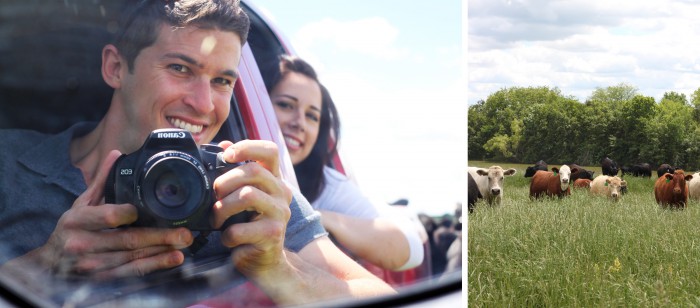



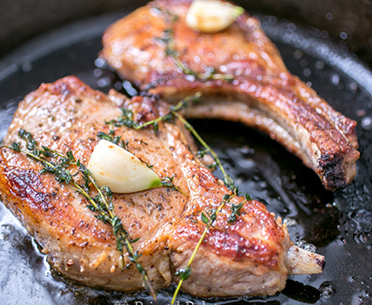

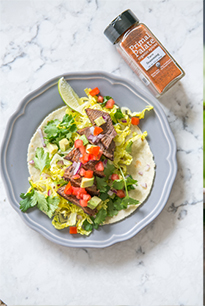
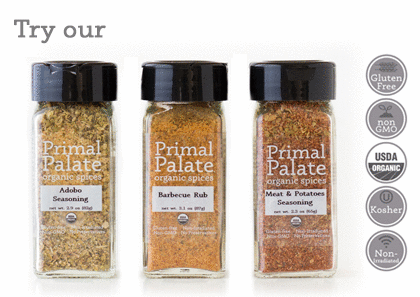





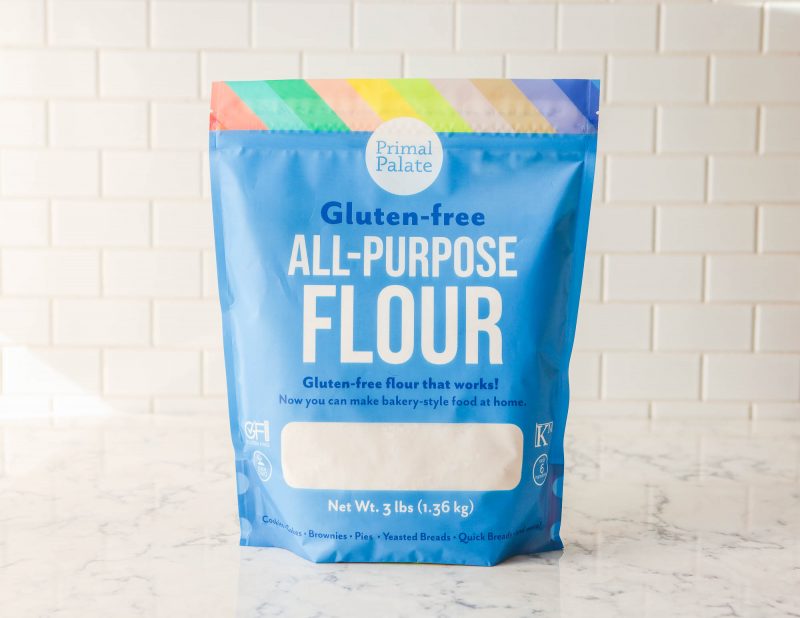

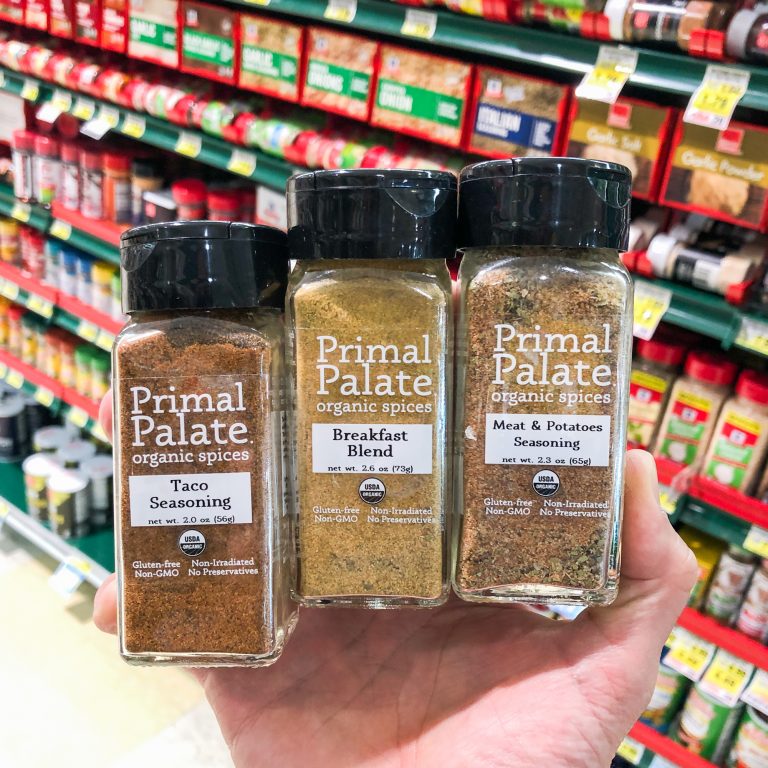
There are no comments yet.